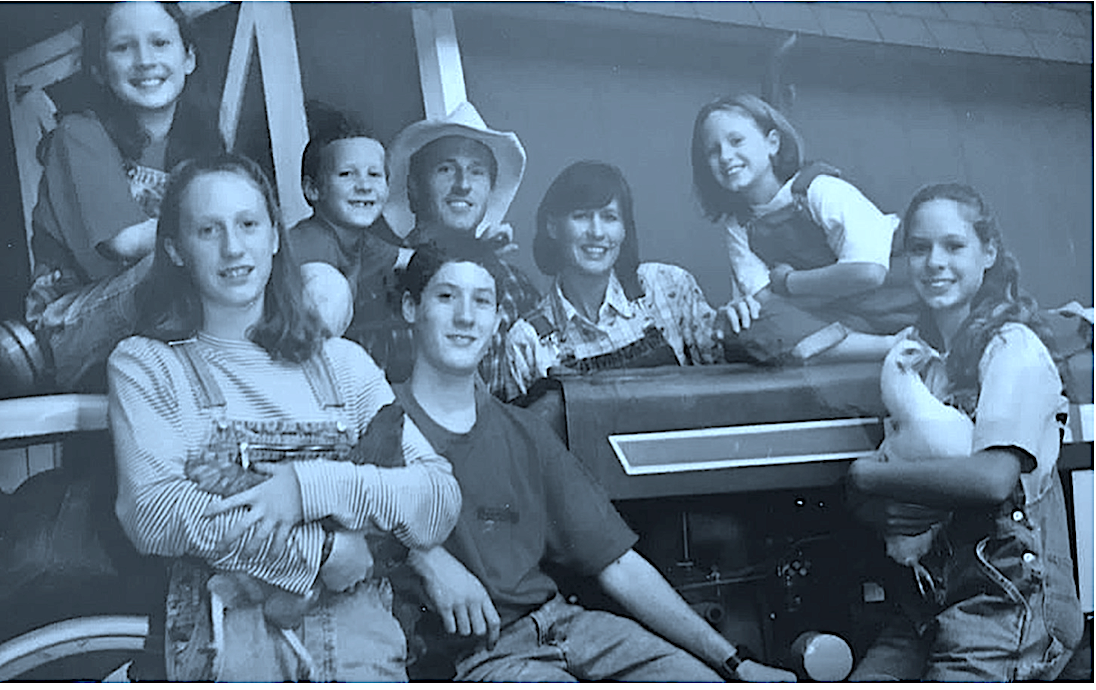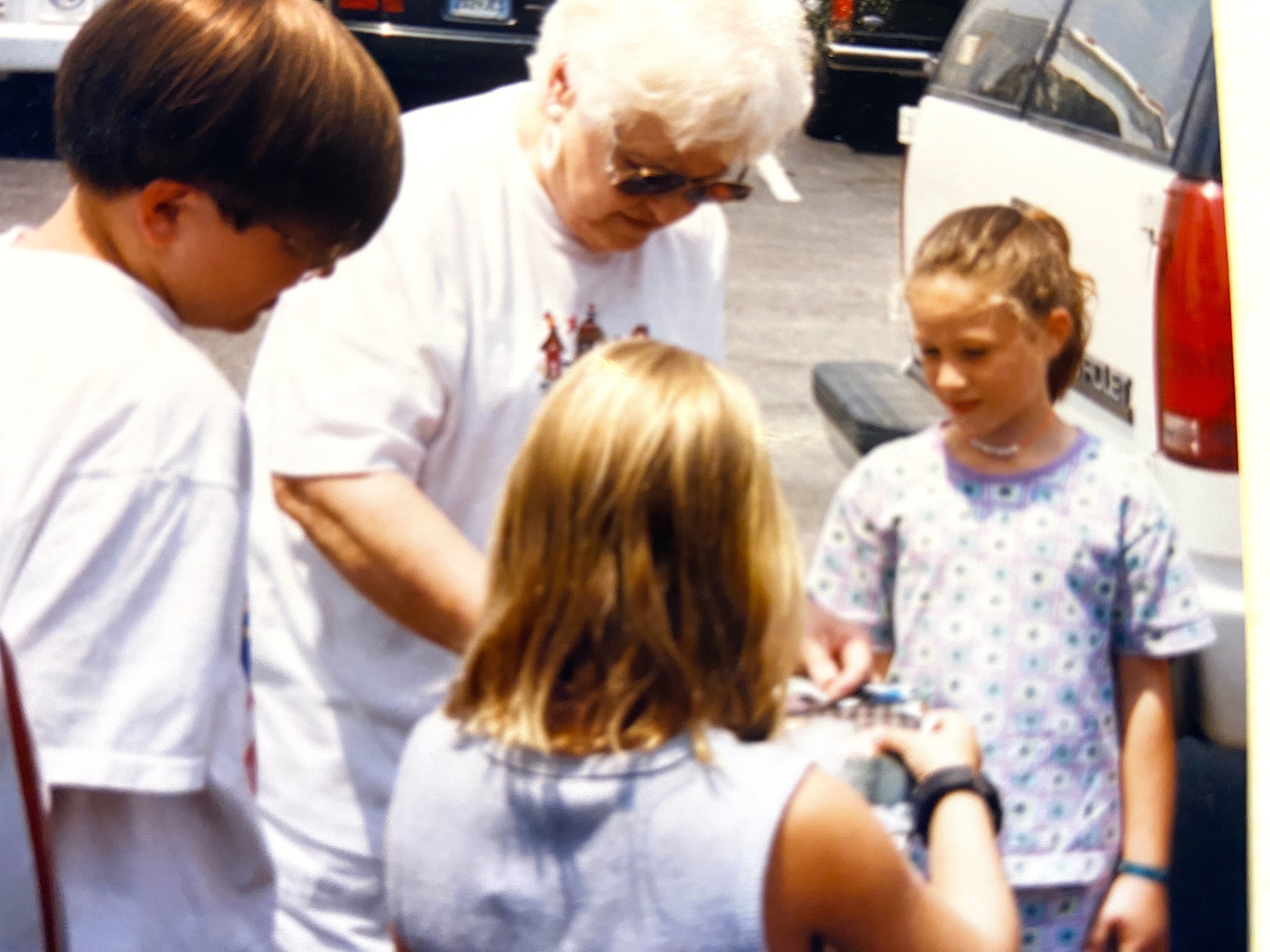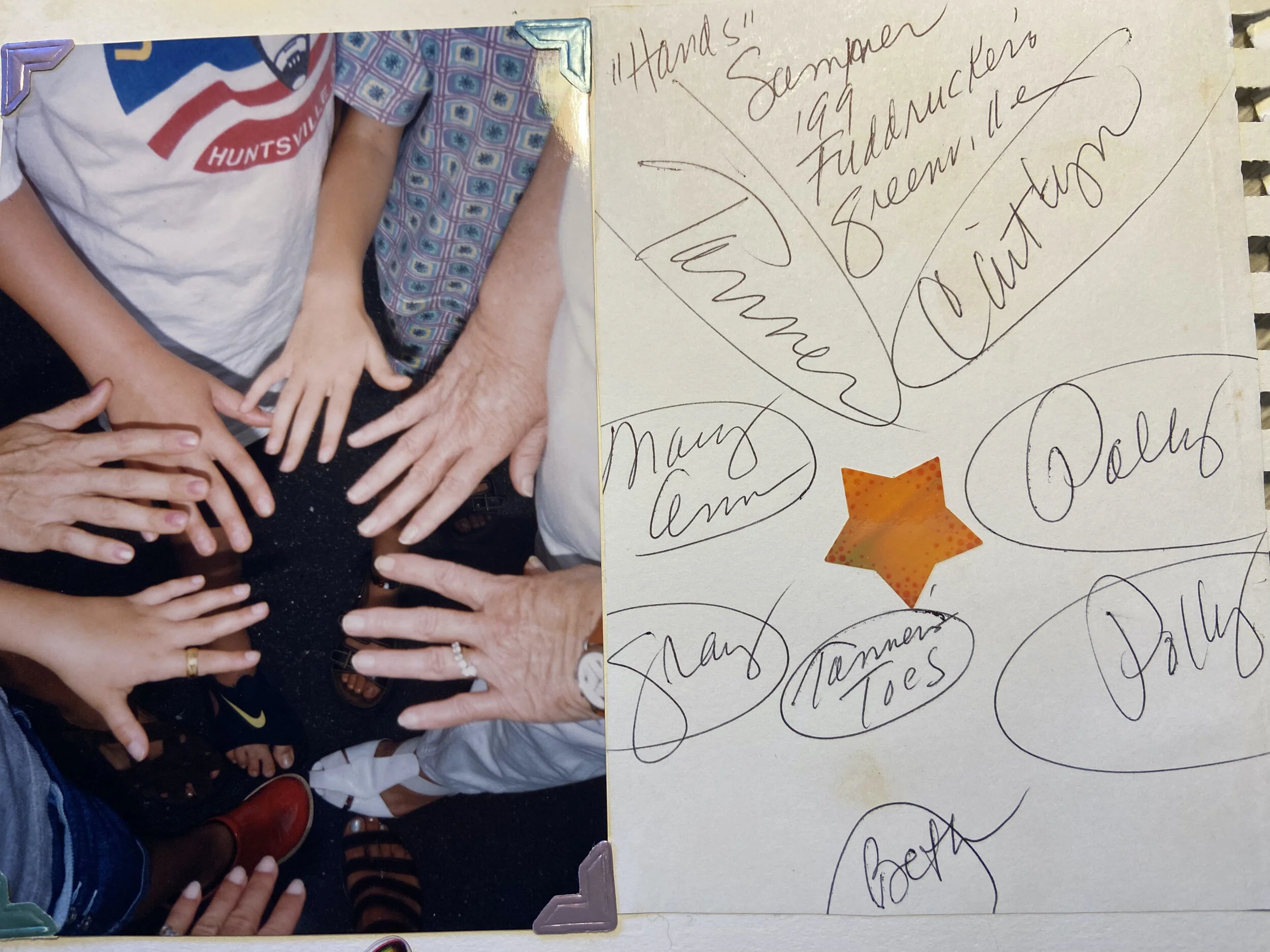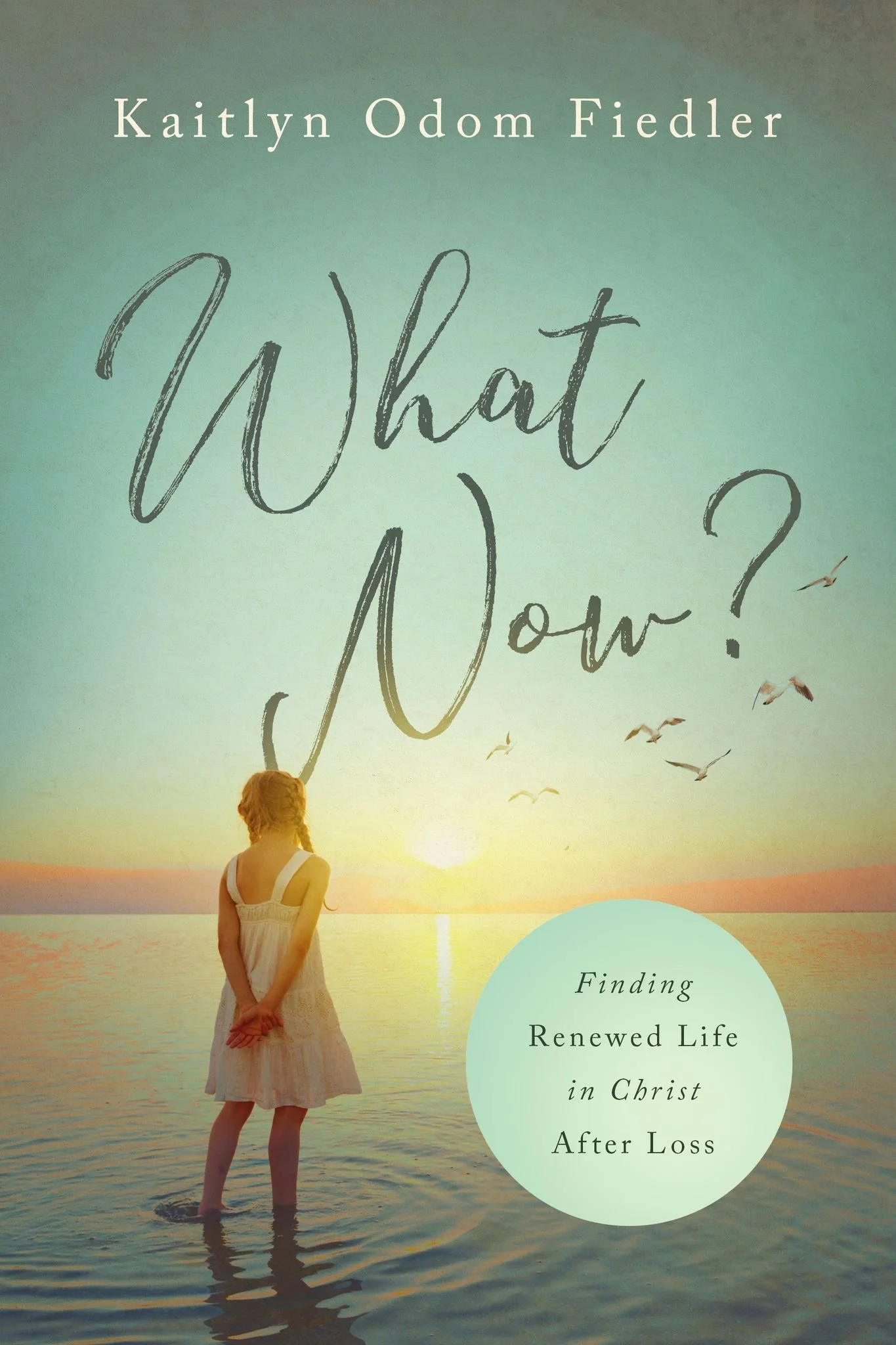What Now?
Jesus said to her, “I am the resurrection and the life. The one who believes in me will live, even though they die; and whoever lives by believing in me will never die. Do you believe this?” John 11:25-26 NIV
It is one of those phone calls you never want to receive. You can’t take in the words. You think for just a moment if you hadn’t answered the phone, it would all go away, disappear, never have happened.
Terrible accident. The names listed out. Gone. No going back. The white caskets will line up in the church. You will all wait forever and ever to gather graveside because it takes longer than expected to bury so many at one time. And afterward an emptiness, a fear, a "how could this happen?" that never is answered. My fear of large trucks on interstates; watching the grassy area of the median to make sure they don't cross over without warning into my lane. The irrational thoughts while packing the car for a trip - wondering if we never return, is the house cleaned up enough if my family has to turn the key in the lock and come in to disassemble my life?
All of us have our version of the story to tell. My mother had gone with her dear sister Doris to visit their youngest sister Helen, who lived with her daughter June. It was mid-afternoon when Doris’ oldest daughter Lynn called. There had been an accident. It was quickly decided June would drive Pauline and Doris from Sneads Ferry to the hospital in Columbia. It was a long drive. Mostly quiet. Unusual for these three women who never stopped talking. June said Momma would hold Doris’ hand and speak words of comfort as they made the long trip, not knowing what they would discover on their arrival. Lynn had told June there were fatalities. With an ‘s’. That was all they knew.
Over the next few hours, as they drove into the night, a kind doctor had come into the hospital waiting room to talk with the family who had already gathered. Lynn opened her hand to receive her sister Mary Ann's wedding rings in her palm. Her oldest son, Abel had been able to describe who was sitting where… and what clothes they had on. Kaitlyn was in a medically induced coma if I remember correctly. One of the twins was in surgery – her condition was critical.
Doris’ youngest daughter Jane would recount when the car with my mother, Doris, and June arrived. They ran to the parking lot to embrace them. It fell to Lynn, the oldest daughter to unspool the names of the survivors. And then the names of the dead. Mary Ann. Her husband Taylor. Lacey. Little Kirby. One of the twins, but her sister would soon join her; Mary Taylor and Allie. I cannot imagine the horror of telling that story – or hearing it.
I drove from Atlanta to Greenville to be there in my mother’s house when she arrived. Lights on. Supper cooking on the stove. It had been a long 24 hours and I didn’t want her to come home to an empty and dark house. I called Lynn and asked her if she would like me to drive to North Carolina to get clothes to bury them in. Of course, they had climbed into the car in shorts and tee shirts, heading for the beach. “Oh my,” she said. “I hadn’t even thought of that.” There were so many other things to think about. Clothing for the ones who really have no need for clothes is low on the list.
These are the stories we tell one another. The stories that bring both tears and oddly, laughter. Grief beyond comprehension. Sorrow that will not leave you. It will get lighter; the searing pain will lessen, but death leaves you wading in heart-wrenching loneliness and despair that must be shared. It helps to tell the story of sorrow. The details of the moment the world dropped away; solid ground failed.
Momma and Kaitlyn One Year Before the Accident
Abel, 15, and Kaitlyn, 8 at the time of the accident, finished growing up right next door to my mother, their great aunt Pauline. A short path led from Don and Fran’s house to the house I grew up in. The house where Mary Ann had spent many nights, sleeping over with my sister Nancy, while I spent the night with Lynn. Swimming most summer afternoons at the pool. Swinging on the swing set. Playing in the woods. Everywhere, the memories. Every pile of candid family photographs with familiar sweet faces. Firmly embedded in my mind are soft memories of laughter and the sound of Mary Ann’s voice.
Mary Ann’s children Abel and Kaitlyn have grown up. Abel married the adorable Jen, a California girl with flowers in her hair walking barefoot down the aisle at their wedding as six white candles burned at the altar. Kaitlyn has also married and is busy loving her husband and nurturing her own family. Asking the question, “What Now?” Kaitlyn is finding purpose in supporting others as they navigate the hard road of death; she tenderly lowers her head to listen carefully, nodding in shared understanding.
All this to say, Kaitlyn has written a book to help her – and others who have suffered traumatic loss walk through the loneliness and sorrow of death. To put words on paper and send them out into the world is no small undertaking. This grown-up child, the age of my own dear daughter, has chosen to open the door and share her grief and her journey on the long road to the living.
This is the most generous of offerings. “Come on in,” she invites us. The house inside is still a bit of a mess, but you are welcome to sit with me for a while and look at the fading photographs and listen to the stories. Share my tears. And in doing so, help me heal. Bring my tears out in the open instead of hiding them in my pillow. Telling you will help me stand a little taller and walk a little steadier. And I will do the same for you.
This is the way we learn to leave grief. We say the words. We listen to the moments. Sometimes, we write them down. We let them fade into the softness of the past; we begin to embrace the future. We hold on to today.
Reading Kaitlyn’s story brought to mind that I had grown up in a house of unthinkable, heart-breaking loss. Joe Farber. I say his name as easily as I say my own. My mother, a sudden widow in her 20s after barely six years of marriage, built a house for herself and her two little ones; Ann, just five, and Kathy, barely three at the time of their daddy's death. I say sudden widow, but I am wrong. It took three years of unbelievably long day after day, dark night after night before the official letter finally arrived declaring him dead after his plane went down somewhere near North Korea.
I grew up in this house my mother built. His face smiling back from the black and white photographs in the drawers in the living room. His diamond engagement ring to my mother is now made into a princess ring worn on her right hand. Kathy must have mourned silently – yet she was the one who told me the stories; both of us wondered since his plane and his body were never recovered, would he one day walk in the back door and take our mother away? Anyway, that was what I wondered… Kathy was probably planning in her young teen mind to go with them.
Oddly, I grew up loving Joe Farber, the dark-eyed smiling man who obviously adored his wife (my mother), and my two older sisters. And that difficult story gave my mother an undeniable strength in times of darkness. A strength she used to comfort her sister Doris. A strength she passed on to her daughters. “We may not understand why things happen. We may never know. But God does. And so, we trust Him.” It was the strength my sister Kathy held to when she walked her slow unwilling walk toward death, repeating over and over again, “God is good. God is good.” And so, we trust Him.
Our stories are worth telling. Worth sharing. Again, and again. Worth reading. Read Kaitlyn’s story, “What Now?” Walking with her in her sorrow, you will also walk with her into a new place, a place of healing and hope. And you won’t be alone. She will place your hand in the hand of Jesus. Who has cried the tears of deep loss for someone he loved. And walked ahead of us to defeat death. He came to give us life, in a world of death.
From Kaitlyn’s book, in a chapter called “Surrendering: My Pain, His Purpose”:
“Despite all the hard days, there are days that are actually really, really good. I catch myself surprised at the joy swelling inside my heart. This is life. This is the beautiful mess, the glorious tragedy, where the good and the bad are held simultaneously. And this is also the Gospel—where death led to life, where Jesus’s suffering produced hope for all the world. We’re living this in-between— the co-existing of both good and evil, love and pain, great joy and great sorrow.”
You can find Kaitlyn at https://www.abeautifulbelonging.com. Her book, What Now: Finding Renewed Life in Christ After Loss will be published in April.




